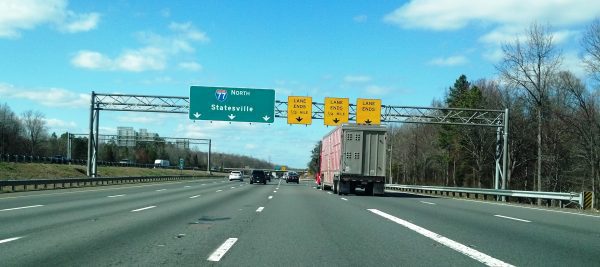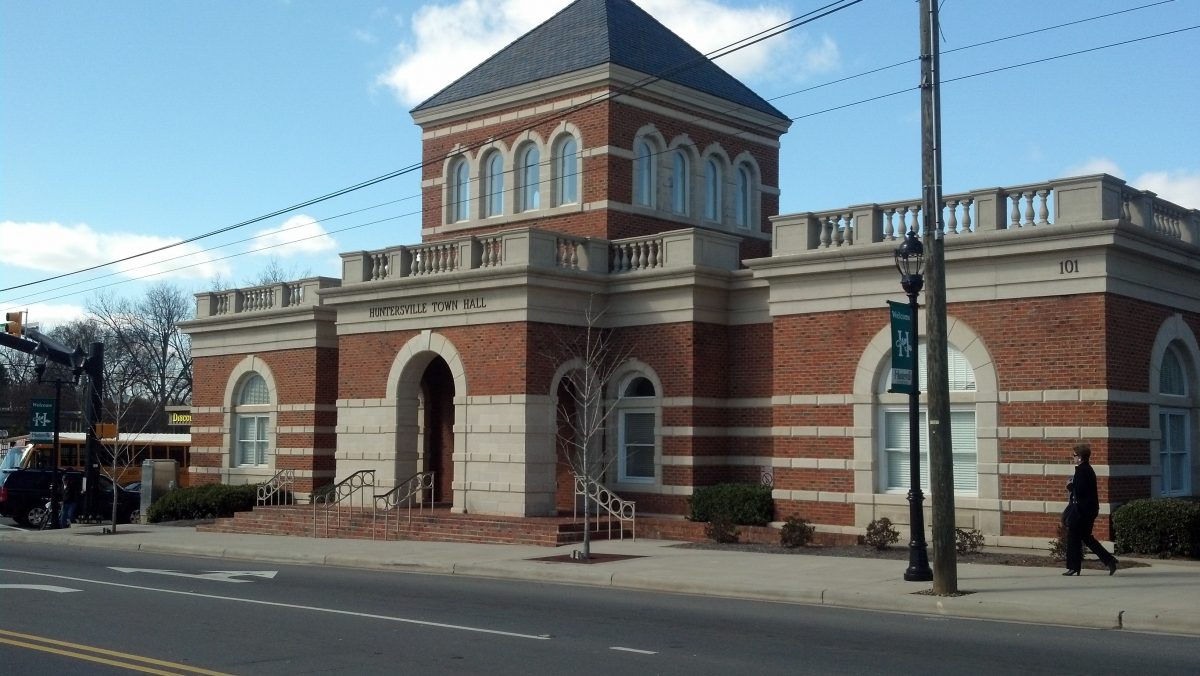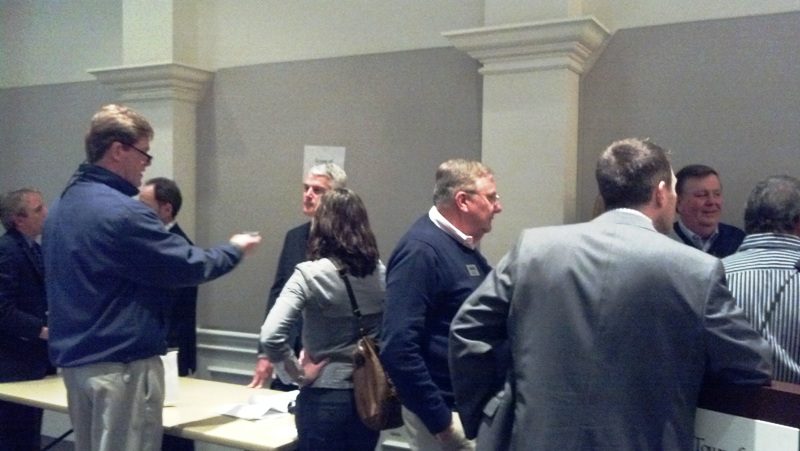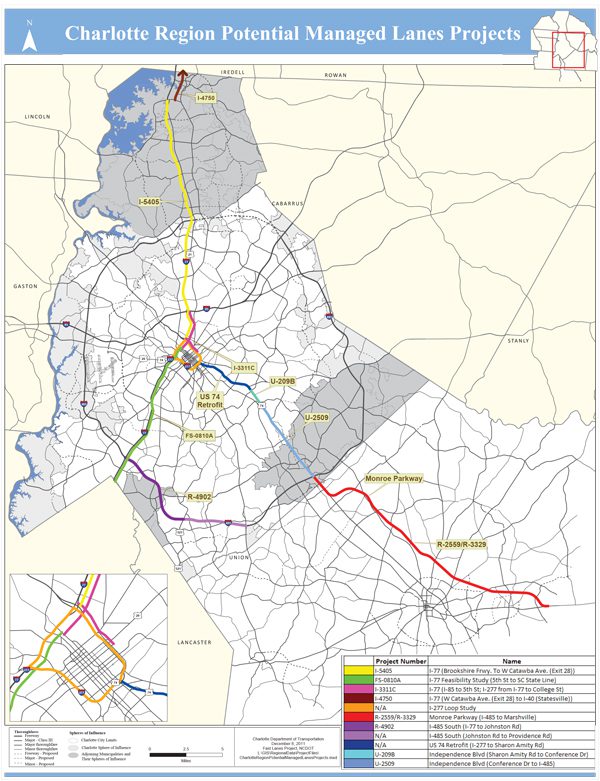HOT lanes: A hot topic at Huntersville meeting

HOT (High Occupancy Toll) lanes proposed on I-77 are a red-hot topic, and residents were vocal about their concerns Wednesday at a public information meeting at Huntersville Town Hall.
Jim Trogdon, chief financial officer for the N.C. Department of Transportation, introduced a group of experts to meet with citizens and answer questions. “The existing revenue structure is not sustainable,” said Trogdon. “Projections in light of sequestration are even worse,” he said.
From the onset of the meeting there was clear angst in the room. “If you convert to HOT lanes, people will just move to Rock Hill and take their taxes with them,” a voice from the room said loudly. “What we want to know is, where are we in the process? Is the DOT just telling us this is how it’s going to be? Where is the voice of opposition?”
 Growth in Mecklenburg is projected to be another 540,000 people (on top of today’s 903,000) over the next 25 years. That is equivalent to the current populations of Denver, Colo., or Fort Worth, Texas, moving here. Although the Charlotte metro region is the largest in North Carolina, its per capita share of state transportation equity spending is below the state average, according to Bill Coxe, Huntersville’s transportation department head. Coxe also chairs the Technical Coordinating Committee for the Mecklenburg Union Metropolitan Planning Organization.
Growth in Mecklenburg is projected to be another 540,000 people (on top of today’s 903,000) over the next 25 years. That is equivalent to the current populations of Denver, Colo., or Fort Worth, Texas, moving here. Although the Charlotte metro region is the largest in North Carolina, its per capita share of state transportation equity spending is below the state average, according to Bill Coxe, Huntersville’s transportation department head. Coxe also chairs the Technical Coordinating Committee for the Mecklenburg Union Metropolitan Planning Organization.
“The challenge we face is that people are not willing to tax themselves to a level where they can build themselves out of congestion,” said Coxe. “The state needs $94 billion by 2040 just to maintain current levels of service, and $113 billion to achieve the desired level of service. Our actual revenue is only estimated at only $66 billion.” To make up the difference, the state is turning to HOT lanes.
HOT lanes work as combination toll and high-occupancy vehicle lanes. They are also referred to as managed lanes, meaning the tolls generated are used to manage the asset (the lanes). Vehicles with three or more occupants, motorcycles, and public transit use the lanes free of charge, while those with fewer occupants can choose to pay for access. Tolls are assessed through a car-mounted transponder with a declining balance. The tolls are not fixed; as lanes become congested, tolls increase to discourage single drivers from using them. The tolls do not change, though, once a car has entered the HOT lane.
 Mary Sullivan, a DOT liaison to local governments, said, “Our goal is utter transparency. We intend to maintain an ongoing dialogue throughout the process.” The meeting in Huntersville was part of this process, where citizens could gather in informal groups to talk to experts from the DOT and the consultants involved in the project. The “talking stations” were organized around three themes: finance and P3 (public-private partnership), scope of project, and operations and mechanics of HOT lanes. At each information station, citizens came and went, asking questions and receiving one-on-one attention from those involved in various aspects of the project. Experts on hand included engineers, financial consultants and municipal leaders.
Mary Sullivan, a DOT liaison to local governments, said, “Our goal is utter transparency. We intend to maintain an ongoing dialogue throughout the process.” The meeting in Huntersville was part of this process, where citizens could gather in informal groups to talk to experts from the DOT and the consultants involved in the project. The “talking stations” were organized around three themes: finance and P3 (public-private partnership), scope of project, and operations and mechanics of HOT lanes. At each information station, citizens came and went, asking questions and receiving one-on-one attention from those involved in various aspects of the project. Experts on hand included engineers, financial consultants and municipal leaders.
“We forget that our town is built around an interstate,” said Huntersville Mayor Jill Swain. “We treat it like a local road, but it’s not. If we had a crystal ball, we would’ve known that we haven’t been taxed at an appropriate level over the last 20 to 30 years to handle the 728 percent growth that Huntersville has experienced.”
A 10-county region began studying “congestion pricing” in 2007 as a way to increase capacity on I-77. The corridor along I-77 between I-277 in Charlotte and exit 36 at N.C. 150 in Mooresville is expected to be the first with HOT lanes. U.S. 74 East between Charlotte and Matthews, and I-485 South between Pineville and Matthews, will be the focal study corridors in Phase III. In addition, existing bus lanes on Independence Boulevard are also proposed for conversion to HOT lanes. The map below shows potential managed lane projects in Mecklenburg and Union counties. (Click map image for a larger, PDF version of the map.)
The I-77 HOT lanes as proposed are to be built inside the existing median because there is no room for right-of-way widening throughout most of the corridor. They are designed to ensure “travel time reliability” by guaranteeing 45 mph speeds during peak hours. DOT and municipal leaders stressed repeatedly that adding general-purpose lanes to I-77 has never been a consideration. (For more information, refer to the MUMPO website, the NCDOT website, or a public website about fast lanes. A citizens group organized against HOT lanes is here.) HOT lanes are not just a local issue – all interstates in North Carolina, including I-85 and I-485, are being considered.
The developer ultimately chosen to construct the HOT lanes will also be responsible for its management and operations for 50 years, after which time the lanes will be turned over to the DOT. During the contract time, the developer is responsible for construction and emergency response, which must be rendered within 30 minutes. This will include such things as clearing debris, removing disabled vehicles and hazardous material spills. This will occur together with normal emergency response by police, fire or ambulance. The developer will also be responsible for maintenance and repaving during the contract time.
According to engineers present from Parsons Brinckerhoff, there will be two HOT lanes in each direction in most places, with a 4-foot separation between non-restricted travel lanes. A 10-foot shoulder for emergency pull-off will be located along the edge of the left-most HOT lane, and a Jersey wall (modular concrete barrier employed to separate lanes of traffic) will separate the opposing traffic lanes. A key feature of the HOT lanes will be their direct connection to I-277 from I-77 without exiting the HOT lanes.
Asked about the ability of the public to attend afternoon meetings, Sullivan replied, “More public meetings will be held, some of those in the evening, in order to get the public’s feedback.” At this stage of the process, an environmental impact assessment is being prepared and four developers have been short-listed. “Upcoming public meetings will include one specifically addressing environmental impacts and air quality compliance,” said Victor Barbour, an administrator with NCDOT.
The selection of the preferred bidder is expected in August, and by October the final environmental approval for all sections of the project should be complete. The project could begin construction in spring 2014.
